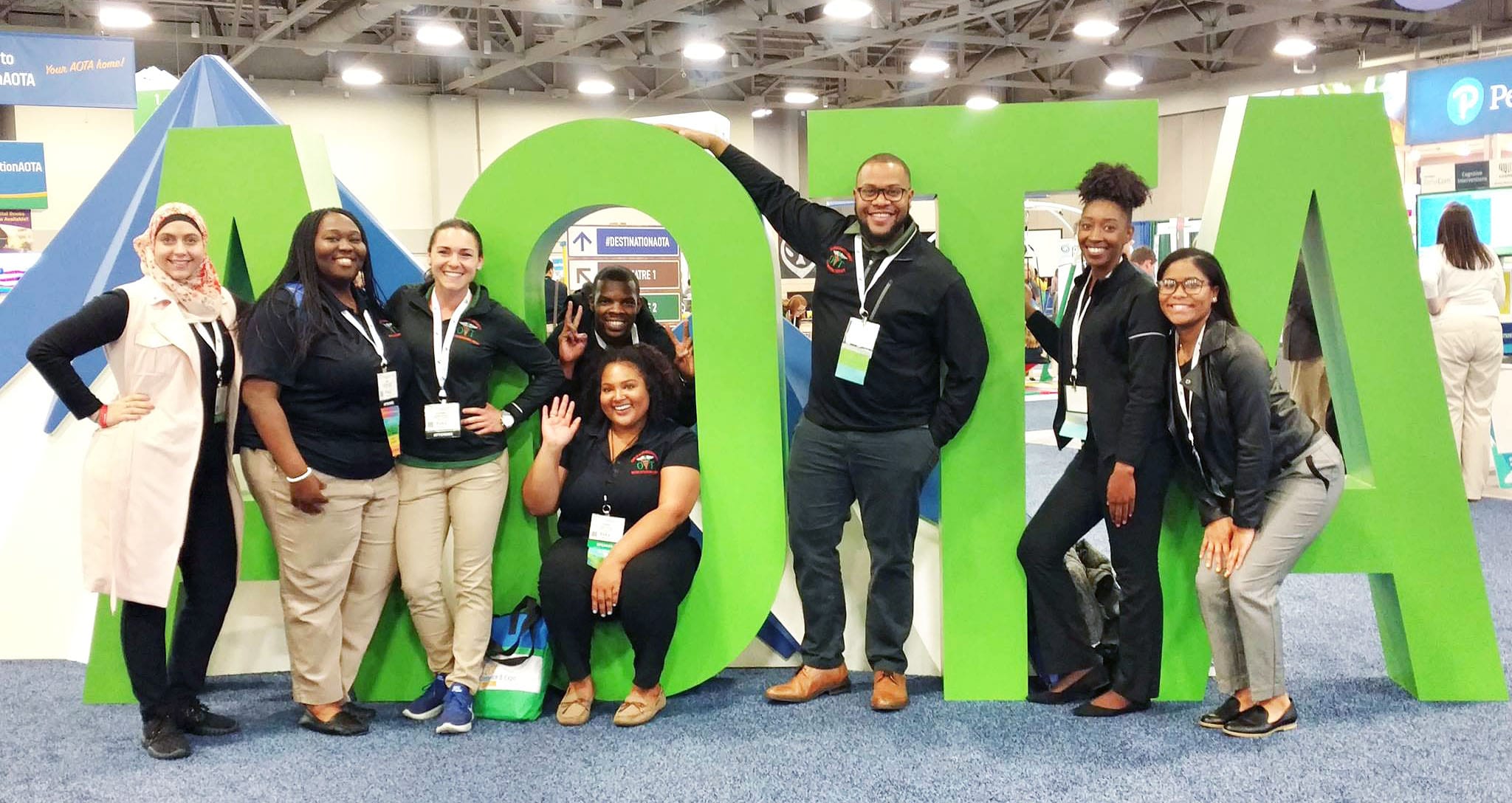Many associations see young professionals as the key to a strong future. But they’re still figuring out how to connect with them. The American Occupational Therapy Association (AOTA) shares their successful strategies and insights for engaging younger members.
Young Professionals Overtaking the Workforce
For decades, Baby Boomers have dominated association membership demographics. But as they continue to retire in record numbers, that share is quickly shrinking. An estimated 75 million “Boomers” will retire by 2030.
Meanwhile, Millennials, who range in age from mid-20’s to early 40’s, are the largest share of the workforce at 35%. And although only 5% of the workforce today, it’s estimated that Gen Z will make up 30% by 2030.
Associations Struggle to Increase Membership of Young Professionals
Gen Z members indicate they are actively seeking out professional development opportunities. This makes them a prime target for associations. But according to the latest Membership Marketing Benchmarking Report, most association members are over the age of 40.
Creating programs and content tailored to young professionals can be a daunting task for association professionals who are already stretched thin. It helps to see what other organizations are doing, using these ideas to start building and testing small pilot programs.
One association that has been successful connecting with younger members is the American Occupational Therapy Association (AOTA). We spoke with Frank Gainer, Director of Conferences, and Melissa Stutzbach, Program Manager of Education and Young Professional Development. They shared their current strategies and the insights they’ve gained along the way.
AOTA’s Strategy for Engaging Young Professionals
AOTA’s mission is to represent the interests and concerns of occupational therapy practitioners and students, and to improve the quality of occupational therapy services. The organization delivers a wide range of programs and activities to their 60,000 members.
Given that nearly half of these members are students, the staff of AOTA wants to ensure they demonstrate the value of membership by helping them transition into a meaningful practice, providing specialized resources and facilitating connections with established professionals and peers.
As Gainer describes it, “Our focus on students and new practitioners has been a progressive journey that dates back to at least 2007.” It was at this time that AOTA introduced their National Student Conclave, a two-day event designed to help students successfully transition into a practice.
“Our Conclave programs focus on practical skills and topics that are needed for new practitioners to be successful on the job that aren’t necessarily covered as part of a typical college curriculum.” These programs include panel discussions with fellow students who are further along in their clinical training and resume evaluation sessions.
The results were extremely positive. Gainer notes, “We were afraid that Conclave would deter students from attending the annual conference, but it hasn’t. In fact, they are actually more engaged at the annual event.”
The success of this event led AOTA to recognize the need for a dedicated resource to focus on student and new professional development. In 2013, Stutzbach was hired to identify and implement programs designed to increase the success and engagement of young professionals.
AOTA’s Two-Part Approach to Engaging Mid-Level Professionals
AOTA recognizes its young professionals are not just students. Stutzbach also sought to address recent grads-to-mid-level professionals.
“When I came on board, we recognized that our engaged members consisted primarily of our students and our more seasoned practitioners. Where we were lacking was with our newer-to-mid-level practitioners. You could clearly see the drop-off in engagement levels when our student members graduated.”
Since 2013, AOTA has developed two overarching goals that must be achieved in order to increase newer-to-mid-level professionals:
1. Continue to strengthen the connection students have to the organization to increase post-graduation retention
2. Create programs that increase membership value for new graduates
In order to accomplish these goals, AOTA has introduced the following tactics:
Overhauling the existing student leadership group
In an effort to start somewhere manageable, AOTA first addressed existing initiatives, looking for ways to make programming more engaging and interactive while providing opportunities to connect students with fellow students. AOTA also introduced a student newsletter written by students to deliver practical information that typically isn’t covered in the classroom.
Introduction and evolution of programming and engagement opportunities at the annual conference
AOTA student members receive full access to their annual conference. But navigating this large event can be overwhelming to students who are also still navigating their careers. AOTA looked to make the event more approachable and valuable to students by including a student session track featuring content that is specific to their experiences.
Additionally, Gainer and Stutzbach are continually looking at new ways to engage attendees and “shake up” the programming to appeal to younger members. According to Gainer, “Our conference team is a very creative group that is open to new ideas and are willing to try new things.” Just a few of the elements they have recently introduced include:
- Interactive, discussion-based sessions
- Fun movement breaks: imagine 600 people learning to Salsa for 30 minutes—an element that was so successful it’s making an appearance for the third year!
- Adult coloring books for a creative mental break
- Live feeds on Facebook and Instagram so those that couldn’t attend feel like a part of the action
Created a tiered rate structure
AOTA offers a new practitioner rate that applies for the first two years after graduation. The goal is to provide a more gradual increase in dues as students start to enter the workforce.
Created leadership training and opportunities for new graduates
AOTA created leadership roles for new graduates on governing bodies, allowing them to provide their input and perspective on the direction of the organization. AOTA also helps facilitate leadership opportunities with state associations. And, they have created an Emerging Leaders Development Program. In this application-based program, accepted members participate in a 3-day leadership training workshop and are then paired with a mentor who guides them throughout the year on service learning projects.
What’s Next for AOTA
Although AOTA already has an impressive roster of initiatives to attract and retain younger members, they are always looking for ways to improve and grow. Stutzbach notes, “We keep a pretty solid feedback loop going to understand what members need, where we can do better, and where we should go next.”
So, what’s next on the docket? “It’s time to revitalize the program that started it all—Conclave. Attendance has been somewhat static, so we’re looking at some new ways to reinvent this very valuable event.”
Advice for Fellow Associations
For those organizations who are still developing a plan to address the needs of young professionals, Gainer and Stutzbach have the following advice, “Try something small and attainable, gather feedback, and build from there.” Both are huge fans of surveying members as well as communicating some of the new initiatives being introduced.
Here is some additional advice Gainer and Stutzbach shared for organizations just getting started:
- Make sure you pull in the perspectives of young professionals across the organization: what’s trending, what they’re interested in and what will resonate. You also need to have at least one dedicated staff member to make sure this input is infused into everything you’re doing or else you’re going to lose sight of it as you become buried with your day-to-day tasks.
- Hire someone young.
- If you can, get a social media person and figure out how people in that profession connect with each other. Then, add social media components that allow members to feel connected not just to your organization, but to your people. Let them in on the behind-the-scenes of what you do.
- People have to be empowered to take risks. But create opportunities to take risks that have minimal consequences, so that if something doesn’t work, it’s not a huge monetary loss.
- Have fun with it.
- It doesn’t have to be complicated. Start small and build from there. Some things will just happen organically that way, so not all the work has to solely be on you.
- Don’t be afraid to fail. You’re going to try something, and it may bomb, and that’s okay.
- And for goodness sake, don’t prevent students from going to sessions at the conference. Seasoned members are open to, and excited about, sharing their experience and wisdom, and helping students transition into the workplace. This could be the best place for your association to start.



Share The Love!